INTEGRATIVE KUNDALINI YOGA
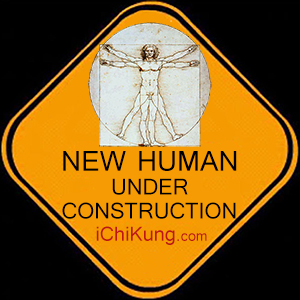
Unblock vertebrae paths releasing stagnated energy from Internal Organs!
WARNING: Side effects may include lower levels of stress and anxiety, increased productivity, higher sex-drive, drastic increase in functional lifespan, better memory, and a more pleasant personality.
As an Amazon Associate―#CommissionsEarned
CONTENT
In 1968 Yogi Bhajan® introduces Kundalini Yoga in the United States, where he became known for his mastery in yoga, for introducing his kundalini yoga in the West and for inspiring others to follow the path of Guru Nanak (1469-1539, founder of Sikhism) in a "special version for the Age of Aquarius" (not recognize by Sikhism). Integrated Kundalini Yoga derives from these teachings.
It is an authentic yoga and meditation system that promotes health, happiness, and energy (spiritual) awareness. It is a science that combines postures (asanas), movement, sound (mantra), breathing (pranayama) and meditation (dhyana) to obtain a powerful evolution. It is designed to provide a high consciousness experience through the management of Kundalini energy. Kundalini Shakti is the innate intelligence of embodied Consciousness.
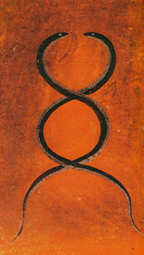
Integrative Kundalini Yoga is a physical and meditative discipline, comprising a set of simple techniques that uses the physical body, the senses, and the intuition to create a communication between body, emotions, mind, and spirit (energy). Integrative Kundalini yoga focuses on the body's potential for maturation, giving special consideration to the role of the Spinal Column, Autonomic Nervous System, and the Endocrine System.
Integrative Kundalini Yoga concentrates on chakras in the body to generate a flow of energy upward (energizing) and downward (cleansing) along the spine. Kundalini in Sanskrit is 'That which is coiled' (Sanskrit kund "to burn"; kunda "to coil or to spiral"). Kundalini is the potential form of Prana, Qi, Chi, or life force, lying dormant in our bodies. It is conceptualized as a coiled-up serpent lying at the base of our spine, which can spring awake when activated by the Integrative Kundalini Yoga disciplines.
If your actions find outward expression, involving body, mind, and the physical dimensions of energy, that is karma. But if you turn inward and perform an action beyond all dimensions of physicality, that is kriya. Karma is the process of binding you. Kriya is the process of liberating you.
The most significant aspect of yoga is to act on the physical dimensions of energy. Among the four dimensions of physicality, you are most conscious of bodily actions, less of the mental, much less of the emotional, and negligibly of the energetic. The moment you learn to act with the non-physical aspect of your life energy, you suddenly move to a new level of freedom (Mukti) within and outside of yourself.
How do you access the non-physical aspect of your life energy? The yogic practices, which involve postures, breath, attitudes of the mind, and energy activation, are all essentially oriented toward aligning the first three layers of the body: the physical, the mental, and the energetic (spiritual) body. It is only in aligning them that you find access to dimensions beyond the physical ― to the fundamental life energy itself.
Sadhguru says I have seen any number of people who start doing a simple kriya, and suddenly become so creative that they can achieve things that they never imagined possible in their lives. This is simply because they loosened their karmic foundations a little. They shook up their life energies for a change, instead of being entangled with their physical processes of body, mind, emotions, and energy. This is something every human being can learn to do.
Reference: Inner Engineering, A Yogi's guide to Joy, Sadhguru
The spinal cord is a long column of nervous tissue (Autonomic Nervous System) that acts as the pathway for transmitting information between the brain and body organs at the speed of light. It is encased by a series of bones, the vertebrae, which allows for flexibility of the back and protect the very delicate spinal tissue. Different levels of the spinal cord control different parts of the body. There are 31 segments in the spinal cord and each controls different parts of the body. For example, cervical level 1-2 (C 1-2), the highest and closest to the skull, controls breathing; C 5-6 (the most common injury site) located at the bump where your neck meets your back, controls fingers and hands. At each segment, nerves leave the cord, nerves that are responsible for specific parts of the body. Nerves from the body also enter the cord at each segment, providing sensory information about specific body parts to the brain.
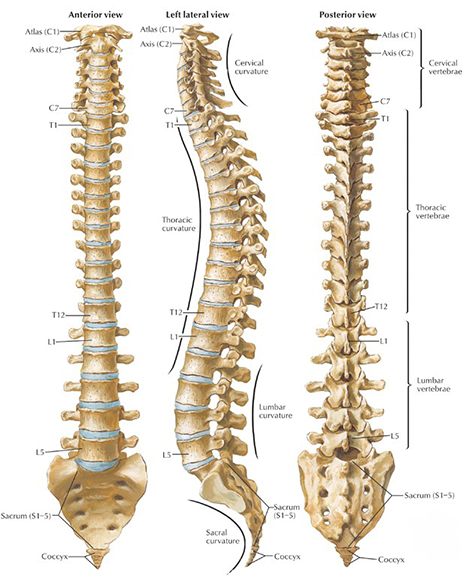
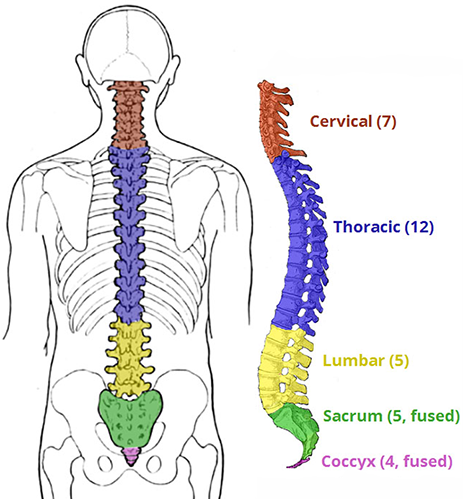
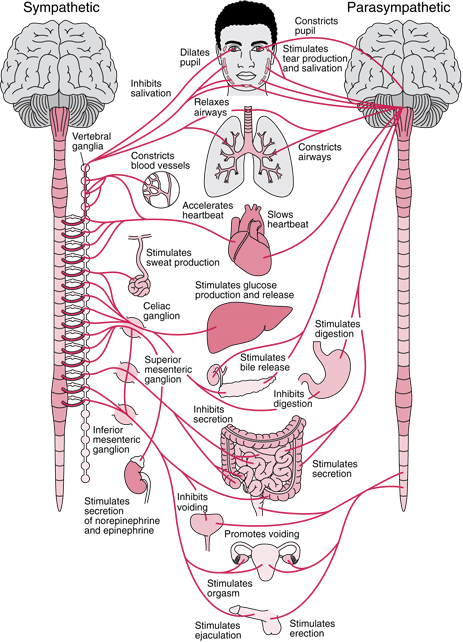
The spinal cord conveys information between the brain and the organs, and vice versa. Large bundles of nerves, called tracts or columns, run, for example, from the motor centers in the brain down the spinal cord and connect to pools of motor neurons that are responsible for movement.
Abnormal alignment of the spinal structure alters brain function placing the Autonomic Nervous System (ANS) in a stress state, altering blood pressure, cholesterol, blood sugar, immune system, and more. The ANS controls and coordinates every function of the body, and placing pressure on the brain stem creates a stress response.
Altered structure results in the altered functioning of the brain. Cerebellum influences Frontal Cortex Delta-wave altering cognitive process. The cerebellum plays a complex role in executive functions, creativity, attention, planning, emotional regulation, or reward-seeking behavior. Dysfunction or abnormalities within the structure of the cerebellum can be linked to disorders such as schizophrenia, Tourette's syndrome, autism spectrum, Parkinson's disease, addictions, bipolar disorder, and depression. (Psychology Today, March 29, 2017)
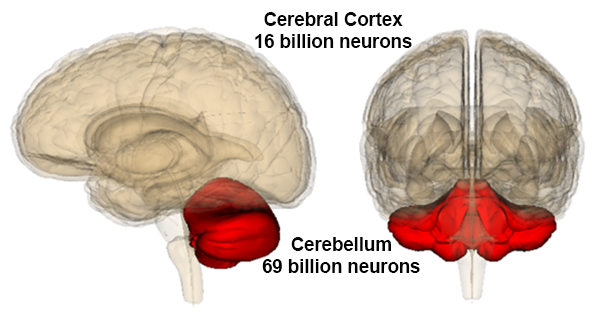
Movement stimulates efficient communication between the Cerebellum and the Cerebral Cortex; which is neuroplasticity. It increases angiogenesis, neurogenesis, synaptogenesis, and the synthesis of neurotransmitters in different cerebral structures involved in cognition due to the increase in the liberation of neurotrophic factors and the production of enzymatic antioxidants.
- Increases the size of hippocampus and improves memory
- Reverses hippocampal volume
- Increases blood flow and oxygen to the brain
- Encourages the release of accumulated toxins
- Increases nutrition of brain cells
- Reverses normal brain shrinkage by 2%
Physical, emotional, or chemical stress affects our 4 bodies accordingly.
In Integrative Kundalini Yoga, one of the most important benefits is maintaining a healthy body via an aligned and flexible spine. The yogis say that "youth is determined by the flexibility of your spine." Low back pain and upper back stress are some of the most common health complaints of adults.
Physical, chemical, and emotional stress will increase the tone of the muscles surrounding the thoracic and upper lumbar vertebra area (sympathetic), which means that there will be less motion. The discs in the spinal cord get their nutrients through movement, they have a very limited blood supply because of the average pressure of about 100/150 pounds/square inch in a human. This stiffness can alter the pelvic function.

The best way to avoid backaches is to take care of your spine daily. There are no quick fixes for back pain, but Integrative Kundalini Yoga exercise sets are an effective maintenance program.
Even though Integrative Kundalini Yoga is a Power Yoga, it is more than just a great physical workout. Called the Yoga of Awareness, it is an incredible experience in awakening and raising your consciousness, keeping you young, giving you the fullness of heart while it heals you on a cellular level, providing health, happiness, and the ability to commit while building character and stamina. And you don't have to be an acrobat or gymnast to experience the sublime power of your creative potential being released.
In Integrative Kundalini Yoga, we want to proceed with the realization that our true strength comes from within. We want to go beyond muscular strength alone, to faith in the flow of spirit. In light of this, breakthroughs become a way of life. Integrative Kundalini Yoga recognizes that a strong nervous system, and a healthy glandular system, are pre-requisites to living a life of celebration, discipline, and radiance.
Through Integrative Kundalini Yoga people have healed themselves of the pain of physical illness, mental stress, drug and alcohol addiction, and more. Because Integrative Kundalini Yoga develops the total person, practitioners also become more intuitive, more sensitive, and more subtle within the shortest possible time. In the yogic tradition, Kundalini is the latent spiritual energy within every person that can be awakened by the practice of yoga.
PRACTICE
Practicing Integrative Kundalini Yoga allows you to build a healthy body, keep it in shape, increase your vitality, train your mind to be strong and flexible in the face of stress and change, and make contact with your infinity, your innate inner wisdom, as well as open the door so that you can fulfill your potential. It balances the glandular system, strengthens the nervous system, and enhances creative potential. Through breathing techniques and meditation, peace of mind can be obtained, giving an experience of deep inner calm and self-confidence. It gives you the vitality and health that is your birthright. It makes you radiant, peaceful, and strong so that you can meet life's challenges and win.
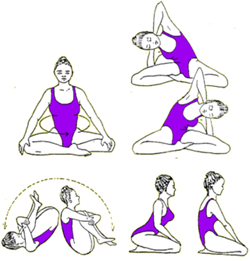
Integrative Kundalini Yoga is much more "concentrated" than other yogas. It is also safe to practice on your own since the postures are not dangerous for beginners. The practice of Integrative Kundalini Yoga consists of several bodily postures, expressive movements, breathing patterns, and degrees of concentration. None of these postures and movements should, according to scholars of Yoga, be considered mere stretching exercises or gymnastic exercises.
It is important to understand that during the Integrative Kundalini Yoga sessions, the practitioners go through two stages: an energizing stage and a cleansing stage. One must always end the session on the cleansing stage. The Chi or Prana energy intensifies its flow in two opposing directions circulating mainly between two of the eight extraordinary vessels. The Governing and Conception vessels are the main energy rivers of the body. They both have energy pathways on both the anterior and posterior vertical mid-line of the body. These two lines join at the extremes of the torso, the head, and perineum, forming a complete circle of energetic current. One direction follows the Fire Cycle, moving Chi along the Governing Vessel, flowing up the spine and down the chest. The Conception Vessel follows the Water Cycle, moving Chi up the chest and down the spine.
Practice a minimum of 12 minutes daily regularly.
Introduction to Yoga 9 Videos
Introduction to Kundalni Yoga 3 Videos
How does this all fit together
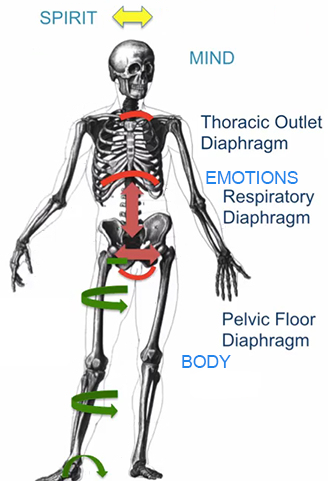
The breath pattern used in Integrative Kundalini Yoga affects the Autonomic Nervous System (ANS). If you are breathing from the Chest, or from the Thoracic-stress-breath, or Thoracic-outlet diaphragm we are going to get what is known as the sympathetic or the fight-or-flight breath pattern; and if it is from the Respiratory diaphragm, or Abdominal, we will get the relaxation or the parasympathetic pattern.
1. Respiratory diaphragm
2. Pelvic-Floor diaphragm
3. Thoracic-Outlet diaphragm
The 1st diaphragm is the one we are most familiar with and that is the Respiratory diaphragm (1) or Solar-Plexus which goes across the entire bottom of the rib-cage, separating the heart and lungs from the internal organs.
When the 1st diaphragm contracts it pulls down to create increase spacing in the rib-cage which fills then with air, giving pneumatic stability, but it also increases the Intra-Abdominal Pressure (IAP) which gives an uplift on the spine and in the discs below.
If there was only this downward pressure your organs would fall on the floor, so we need the 2nd diaphragm called Pelvic-Floor diaphragm (2).
The Pelvic-Floor does not get much press, but it is a critical structure and the relationship is being more, and more, defined between, how it and the other 2 diaphragms must operate. So when we get that positive pressure down there, it exerts a slight pressure in the pelvic-floor, and the rhythm and movement of these two diaphragms, have these nice even dynamics and rhythm between the two which keeps both mobile and flexible. In the pelvic-floor, females have two(2) more muscles than males, the Compressor Urethrae and the Sphincter Urethrovaginalis, and males have the Bulbourethral glands or Cowper's glands.
Of course in life, there are times when we have to get more breaths, and when that occurs, we have a backup system which is at the Thoracic-outlet diaphragm (3) which includes the Glottis and the Voice-box. The Thoracic-outlet is a critical backup system where the muscles of the neck and the chest lift on the rib-cage to increase space. Such as when you run up the stairs and put your hands on your knees to catch your breath; but the problem is that when it pulls-up it also pulls-down, so it also creates compression on the cervical-spine.
This relationship is very critical because of the high numbered times we utilize this movement. Only the heart beats more and the eyes blink more often, but otherwise, we need to breathe 12 to 15 times/minute (900 times/hour, over 21,600 times/day), so it is a big workload.
If a person is breathing from the Respiratory diaphragm (1) it comes up and affects the Autonomic Nervous System (ANS). By the same token, if they are breathing from the Chest, or the Thoracic-stress-breath or Thoracic-outlet diaphragm (3), it also affects the ANS. So we see that with the chests-breath we are going to get what is known as the Sympathetic or the fight-or-flight breath pattern; and if it is from the Respiratory diaphragm (1), we will get the relaxation or the Parasympathetic pattern.
Each of these has an important effect on human health and movement. If we go through them and list them, we see that, as far as pain goes, when you are in the sympathetic you are going to experience increasing pain, when you are in relaxation you will have decrease pain. When you are in sustained sympathetic your mood is going to go down and you are going to deplete your mood elevator when you are in the relaxation face, you will elevate those.
Your immune system is compromised in a sustained sympathetic, with not enough energy to maintain it; wear as in relaxation it gets energized and revitalized.
Your balance goes down under stress, up when relaxed. Your muscle-tone decreases in relaxation and increase in fight-or-flight. Your Gastrointestinal Tract (GI) function increases in the rest/digest phase, decreases under stress. Your respiratory rate goes up under stress, comes down under relaxation. Your heart-rate the same thing, elevates under stress, decreases in relaxation. Your quality-of-sleep goes down under stress, goes up in rest and relaxed mode, and cognition is negatively affected under sustained stress and increases in relaxation.

Kundalini, our Cellular Energy
The practice of Integrated Kundalini Yoga increases the oxygenation of our cells allowing our mitochondria to maintain optimal performance.
Mitochondria are one of the most conspicuous organelles of the cytoplasm and are found in almost all eukaryotic cells. Observed under a microscope, they have a characteristic structure: the mitochondria have an elongated or oval shape several microns in length and are surrounded by two different membranes, one external and the other internal, very folded. Mitochondria are the energy-producing organelles. The cell needs energy to grow and multiply, and the mitochondria provide almost all this energy by performing the last stages of the decomposition of the food molecules. These final stages consist of the consumption of oxygen and the production of carbon dioxide, a process called respiration, due to its similarity with pulmonary respiration. Without mitochondria, animals and fungi would not be able to use oxygen to extract all the energy from food and maintain growth and the ability to reproduce. Organisms called anaerobes live in oxygen-free media, and all of them lack mitochondria.
The Mitochondria (from the Greek mitos = thread, strand, khondros = grain, granule): The cell power plant. Self-replicating organelles, which are found in the cytoplasm of the eukaryotic cell surrounded by two membranes, complete the process of consumption of glucose or ketone bodies (33% more efficient), generating most of the ATP needed by the cell for its functions.
Tiny double-membrane cell structure responsible for the conversion of nutrients into the energy-rich compound adenosine triphosphate (ATP), which acts as cellular fuel. For this function they perform, called respiration, it is said that mitochondria are the motor of the cell.
Mitochondria are found in eukaryotic cells (cells with the nucleus delimited by a membrane). The number of mitochondria in a cell depends on the function of the cell. Cells with particularly high energy demands, such as muscle cells, have many more mitochondria than others. Because of their strong resemblance to aerobic bacteria (that is, they need oxygen), scientists believe that mitochondria have evolved from a symbiotic or cooperative relationship between an aerobic bacterium and an ancestral eukaryotic cell.
Reference: Ketogenic diet: connection between mitochondria and diet, Gabriela Segura, MD— August 2013
BENEFITS
- A greater zest for life
- Aids digestion and circulation
- Balances Emotions
- Brings balance to the mind, the body and the soul
- Brings clarity to the mind
- Encourages sense of peace
- Improved breathing and good health
- Improved concentration and increased awareness
- Improves energy
- Improves oxygen-carrying capacity
- Improves parasympathetic nervous system
- Improves rest, digest and the recovery system
- Increased ability to manage stress through relaxation
- Increased physical strength and flexibility
- Increases alkalinity state of the cells
- Increases energy level
- Increases lung capacity for better breathing
- Increases mitochondrial function and Adenosine Triphosphate (ATP) production
- Lowers stress
- Reduces acidity in the blood
- Reduces Blood Pressure
- Reduces corrosion of the capillaries (small blood vessels)
- Reduces heart attacks
- Reduces high stress
- Reduces lactic acid accumulation and the risk of heart attack
- Reduces propensity to diabetes
- Strengthens the immune system & nervous system
- Weight loss
EFFECTS
- Circulation ―Massages and strengthens the heart and stimulates "stagnant" areas
- Emotions ―Brings a calmness, inner strength and an ability to manage difficult situations more skillfully
- Glands ―Regulates hormonal production and aids cleansing of the glands, improving their function, strengthens the adrenal system.
- Immune System ―Balances & strengthens, increases the effectiveness of immune cells, increases the ability to fight chronic infection & stimulates the glands & lymph nodes
- Mind ―Gives increased clarity, concentration, and insight
- Muscles and ligaments ―Gives a slow, non-violent stretch, stimulates circulation, prevents a build-up of lactic acid and corrects poor posture
- Nerves ―Removes toxins, increases neurotransmission, stabilizes responses of the nervous system to stress and reduces involuntary symptoms
- Skeleton ―Frees joints, corrects alignment, strengthens the spine and releases pressure from inter-vertebral discs
YOGA AND GOOD HEALTH
- Osteoporosis ―Yoga is strengthening and weight-bearing. It helps to balance the endocrine system, which in turn aid in retaining calcium in the bones. Yoga improves posture and helps keep the spine supple and strong.
- Pregnancy ―Yoga tones the uterus, helps strengthen the body for labor, improves circulation, strengthens abdominal muscles. Pranayama and relaxation practices are good tools to use during labor.
- Menopause ―Helps bring balance to hormonal levels, great for strengthening bones, for retaining muscle tone and energy levels.
- Your Back ―Helps correct poor posture, strengthen muscles, support the spine, correct any misalignment, and tone the pelvis and abdominal muscles.
- Aging ―Helps retain strength in muscle and bones, loosens joints, tones internal organs, and improves digestion and balance.
- Stress Management ―Excellent for stretching out tight muscles; pranayama, relaxation, and meditation help to release stress and emotions.
- Anxiety ―Pranayama to help with hyperventilation, relaxation practices to manage and release stress. Asanas help to use up excess energy and bring about a sense of steadiness and stability.
- Asthma ―Deepens the breath, improves posture, helps open the chest, and helps remove congestion from the lungs.
- Arthritis ―Helps to loosen the joints and keep them mobile, strengthens the muscles to help keep the joints aligned. It helps to balance the immune system and to release the stress of rheumatism.
- Weight Loss ―It enhances the metabolism of all the body's systems bringing balance to the function of the liver and the abnormal retention of lipids within the cells; reducing metabolic risk factors for diabetes, high blood triglycerides, and cardiovascular disease.
HOW TO PREPARE
You should avoid eating solid foods for at least two hours before class, but drinking water is fine. Many visitors bring along a small bottle of water to sip during the session.
Please wear modest, comfortable light-colored, non-transparent clothing. Practice a minimum of 12 minutes daily regularly.
KUNDALINI AWAKENING (śaktipāta)
According to Yogic phenomenology, Kundalini Awakening (śaktipāta) is associated with the appearance of bio-energetic phenomena that are experienced somatically by the yogi. This appearance is also referred to as Pranic Awakening. Prana or Chi is interpreted as the vital, life-sustaining force in the body. Uplifted, or intensified life-energy is called pranotthana and is supposed to originate from an apparent reservoir of subtle bio-energy at the base of the spine. This energy is also interpreted as a vibrational phenomenon that initiates a period or a process of vibrational energy (spiritual) development (Sovatsky, 1998).
Two early western interpretations of Kundalini were supplied by C.W. Leadbeater (1847-1934), of the Theosophical Society, and the Analytical Psychologist Carl Gustav Jung (1875–1961). Jung's seminar on Kundalini yoga, presented to the Psychological Club in Zurich in 1932, has been widely regarded as a milestone in the psychological understanding of Eastern thought and the symbolic transformations of inner peace. Kundalini yoga presented Jung with a model for the developmental phases of higher consciousness, and he interpreted its symbols in terms of the process of individuation. (PsycINFO abstract: C.G Jung - "The psychology of Kundalini yoga". Princeton University Press, 1999)
Kundalini Yoga: Awakening the Shakti Within
He looks at the ways in which Kundalini can be activated, and what that can lead to in a person's life.
Treading Sacred Waters
When Kundalini Awakening (śaktipāta) happens to people who are not on an energy (spiritual) path, the experience can leave them fragile and fragmented. As the Kundalini process involves a redefinition and reintegration of self, it adds extra pressure when people wish to suppress the transformation and insist to lead their lives normally.
Of greatest benefit is a supportive framework, which can allow people to make sense of the intricate connection between spirit and the movement of physical energy in the body, rather than fearing they are going insane. It is important to understand that Kundalini awakening is a process that taps into the blueprint for higher consciousness, which is latent within every human.
When the kundalini is awakened, the positive and negative qualities within the person will be magnified to a very high degree. Kundalini energy is like fertilizer. Whatever seeds are in the ground will be stimulated to grow. Similarly, whatever ancient seeds a person possesses, whether good or bad, will be magnified. This is why a person going into the energy (spiritual) path experiences intense inner battles. Therefore, it is important to practice inner purification.1
While the enormous changes associated with an energy (spiritual) awakening may demand psychological and social adjustments, they are not in themselves necessarily indicative of illness. Communication and connection with others who can provide support and a meaningful context for understanding the process reduces the isolation and sense of being overwhelmed and can help to minimize the disturbance. Someone who has the personal qualities of creative adaptation to change and a flexible mental framework is more likely to weather the changes with grace and style than those who are rigid in their beliefs and world view.
Master Choa Kok Sui explains
There are many methods of awakening the kundalini energy, but the process must be done properly. There must be proper preparation.
First, the physical body and the energy body must be cleansed or purified, so that the kundalini energy, once awakened to a higher degree, can flow easily without any blockage and without causing damage to the physical body.
Second, one must practice inner purification regularly through character-building. This is done by developing virtues and removing vices or inner weaknesses.
Third, the higher chakras, especially the heart chakra and the crown chakra, must be activated first before awakening the kundalini energy. These two chakras are extremely important.
The activation of the heart chakra ensures that the enhanced intellectual faculty and the increase in willpower will be used properly and harmlessly. The activation of the crown chakra enables the spiritual energy to come down or descend to (1) awaken the kundalini energy safely, (2) awaken it to a higher degree, and (3) regulate the kundalini energy. The kundalini energy is brought up to the higher chakras and the crown chakra by the spiritual energy.
The Relation Between The Spinal Cord with Human Energy and Kundalini Awakening
ESSENTIAL PRECAUTIONS
When practicing this system of yoga, please be careful about these points:
- There may be heat developing in the body, go slow on the active stage of the exercises.
- There may be tingling sensations in the spinal column, palms of the hands or soles of the feet. This is due to energy rising and freely circulating leading to the opening of sleeping chakras. You should not bother too much as it will gradually subside.
- Negative thoughts and desire to express violent emotions. This is part of the energy rising and cleansing process.
- Kundalini Yoga sessions have two stages: energizing and cleansing. One must always end the session on the cleansing stage.
COMMON MANIFESTATIONS OF THE RISEN KUNDALINI
- Alterations in eating and sleeping patterns
- Altered states of consciousness: heightened awareness; spontaneous trance states; mystical experiences
- Digestive system problems
- Ecstasy, bliss and intervals of tremendous joy, love, peace, and compassion
- Emotional outbursts; rapid mood shifts; seemingly unprovoked or excessive episodes of grief, fear, rage, or depression
- Energy rushes or immense electricity circulating the body
- Episodes of extreme hyperactivity or, conversely, overwhelming fatigue
- Headaches, pressures within the skull
- Hearing an inner sound or sounds, described as a flute, drum, waterfall, birds singing, bees buzzing but which may also sound like a roaring, whooshing, or thunderous noises or like ringing in the ears
- Heat, strange activity, and/or blissful sensations in the head, particularly in the crown area
- Intense heat or cold
- Intensified or diminished sexual desires
- Involuntary bodily movements (occur more often during meditation, rest or sleep): jerking, tremors, shaking; feeling an inner force pushing one into postures or moving one's body in unusual ways
- Itching, vibrating, prickling, tingling, stinging or crawling sensations
- Mental confusion; difficulty in concentrating
- Muscle twitches, cramps or spasms
- Numbness or pain in the limbs.
- Pains and blockages anywhere; often in the back and neck
- Racing the heartbeat, pain in the chest
- Spontaneous vocalizations (including laughing and weeping) are as unintentional and uncontrollable as hiccups
PSYCHIC EXPERIENCES
- Extrasensory perception; out-of-body experiences; past life memories; astral travel; direct awareness of auras and chakras; contact with spirit guides through inner voices, dreams, or visions; healing powers.
- Increased creativity: new interests in self-expression and energy (spiritual) communication through music, art, poetry, and more.
- Intensified understanding and sensitivity: insight into one's essence; a deeper understanding of spiritual truths; exquisite awareness of one's environment (including 'vibes' from others).
- Enlightenment experiences direct Knowing of a more expansive reality; transcendent awareness.
Reference: 1 Master Choa Kok Sui
KUNDALINI SYNDROME, Understanding and how to Treat
Yogi Sharanananda says,
Many people experience Kundalini Syndrome without ever knowing it, especially practitioners of meditation. When Kundalini energy starts to flow abundantly in a person who has not developed or maintained a clean energy system, then it can cause certain physical, emotional, and mental problems. Common physical effects would be overheating, discomfort, exhaustion, or hyperactivity. Emotional problems might be heightened temper, depression, or manic states. Mental problems might be a lack of concentration or oversensitivity to surroundings.
When experiencing Kundalini Syndrome, one should temporarily stop or reduce the Meditation and Yoga practices, and concentrate on the purification of the energy bodies. Salt baths and following a vegetarian diet will help to cleanse the energy bodies. Seeing a Pranic/Shen Kung Energy Healer would also be a good idea.
Theorists within the schools of Humanistic psychology, Transpersonal psychology, and Near-Death Studies describe a complex pattern of motor, sensory, affective, and cognitive hermeneutic symptoms called The Kundalini Syndrome. This psycho-somatic arousal and excitation are believed to occur in connection with prolonged and intensive energy (spiritual) or contemplative practice—such as meditation or yoga—or as a result of intense life experiences or a close encounter with death—such as a near-death experience. According to these fields of study, the Kundalini syndrome is of a different nature than a single Kundalini episode, such as a Kundalini rising. Kundalini syndrome is a process that might unfold over several months or even years. If the accompanying symptoms unfold in an intense manner that de-stabilizes the person, the process is usually interpreted as an energy (spiritual) emergency.
Interdisciplinary dialogue within these particular schools of psychology has now established some common criteria in order to describe this condition. Motor symptoms are thought to include tremors, shaking, spontaneous or involuntary body movements, and changes in respiratory function.
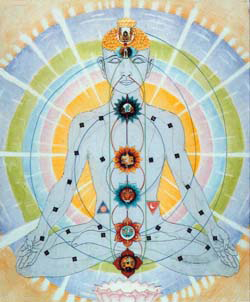
Sensory symptoms are thought to include:
- changes in body temperature (feelings of heat or cold)
- a feeling of energy running along the spine or progressing upwards in the body
- a feeling of electricity in the body
- headache and pressure inside of the head
- tingling
- vibrations and gastrointestinal problems
Cognitive and affective symptoms are thought to include:
- psychological upheaval
- stress
- depression
- depersonalization or derealization
- intense mood-swings
- altered states of consciousness (trance-like experiences)
- hallucinations (inner visions or acoustical phenomena)
- but also moments of bliss and deep peace
Gopi Krishna described the symptoms of what he thought was kundalini awakening based on his own experiences. From his early years of turmoil, he described:
- a stream of light and a roaring sound in his head
- a rocking sensation, a sense of slipping out of his body followed by a sense of detachment and disinterest
- weakness in his arms and legs
- fatigue and uneasiness.
Roaring noises or other loud auditory hallucinations have also been reported. Within the mentioned academic traditions this symptomatology is often referred to as the Physio-Kundalini syndrome or Kundalini experience/awakening. Transpersonal literature emphasizes that this list of symptoms is not meant to be used as a tool for self-diagnosis. Any unusual or marked physical or mental symptom needs to be investigated by a qualified medical doctor.
Greyson (1993) developed The Physio-Kundalini Syndrome Index in order to measure the degree of Physio-Kundalini symptoms among Near-Death experiencers. Most researchers within this field believe that the core of the process is not pathological, but maturational, even though the symptoms at times may be dramatic and very disturbing. According to the field of Transpersonal Psychology, the Kundalini syndrome is largely unknown to Western psychiatry. Many writers within this field are consequently working towards a clinical approach to the problem. Possible improvements in the diagnostic system that are meant to differentiate the Kundalini syndrome from other disorders have been suggested. Turner, Lukoff, Barnhouse & Lu (1995) has suggested that the Kundalini symptomatology might be placed under the diagnostic category "Religious or Spiritual Problem".
Recent criticism of some of the approaches to this clinical category, and the current interpretation of the symptomatology, has been put forward by Sovatsky (1998). He thinks that it is crucial to differentiate between the symptoms of what is thought to be a Kundalini awakening and the symptoms of different preliminary yogic processes. According to this view, many reported Kundalini problems might rather be signs of the precursory energetic state of pranotthana—withdrawal of the senses from their sense objects; restraining the mind's outward-flowing tendency. Confusion of terms within this delicate area of clinical concern might also—unfortunately—lead to various undiagnosed neurological problems being misdiagnosed as a Kundalini-problem.
In an article from Psychological Reports, Thalbourne (2001) discusses whether scores on a 35-item Kundalini Scale are correlated to the concept of Transliminality—a hypothesized tendency for psychological material to cross thresholds into or out of consciousness. The Transliminality Scale, presented by Lange, Thalbourne, Houran & Storm (2000), defines a probabilistic hierarchy of items that address:
- magical ideation
- mystical experience
- absorption
- hyperaesthesia
- manic experience
- dream interpretation
- and fantasy proneness.
In an article from the Journal of The Royal Society of Medicine Le Fanu (2002) briefly discusses the similarity between the interpretation of medical "mystery syndromes" and the Kundalini experience.
A PERSONAL EXPERIENCE
Kundalini is so deeply personal and unique chemistry, it doesn't seem advisable to try and block or counter its progress. If you look into cases where people have used antidepressants or antiseizure medicine for kundalini, you will probably find that they were worse off with the medication than without. They aborted their chance of shamanistic death and rebirth... they forfeited the experience of their highest highs and lowest lows... and so are lesser people for it. Instead of medication, a positive approach to kundalini awakening is needed. That is preparation, protection, practices, and higher purpose. The transpersonal is achieved via the amplification of the personal.
We each describe our kundalini experience through our information base, believes, and attachments. But you can't describe the ineffable, although poets do try... and that poetry directly channeled from the Fire of Fires, might come close to communicating its depth and novelty. Kundalini has so many effects simultaneously that to a non-popped person a kundalini revealer might sound like an intoxicated looney. This is partly so because the psychic realm is so widely opened by kundalini that our dreams, precognition and remote sensing ability infiltrate awareness. So we have these newly amplified extra-sensory abilities to navigate a consensus world that makes little sense and is of questionable value.
During a kundalini awakening we are at a lifetime peak in pituitary potency, so our center of being rises to the psychic level, and we have access to a vastly higher vision and taste of reality. While at that level we cannot fit our larger being down into the consensus flatland "reality." Thus when in this higher operational mode we are essentially alone; unless of course, we find others that are operating in this higher space-time. But considering the numbers of poppers, it's rather unlikely, especially to find someone stable and healthy in that condition.
Also, kundalini is not a definite thing because it is a cluster of experience and affect from subatomic to spirit. And so how we explain it in its beginning stages will perhaps be far different than how we explain it five years after our peak. How we explain it in scientific terms is going to be far different than explaining it as a neophyte with no knowledge of kundalini whatsoever. It's not so much where we are on the spiral of development, it's the degree of information and contemplation we have given to our experiences that denotes how we will relate it. Kundalini is a natural phenomenon with infinite perspectives, interpretations, implications, and explanations.
Consider that life is exactly like surfing waves. There is a charge of life-force that arises with any new exciting event be it meeting a lover or a Eureka discovery. But if we fail to ride the energy of that charge we miss the wave and get grounded into the sand. Each time we do this aborted surfing trick we get further and further from the life we want, and we get less and less excited about every new event. Thus if we don't learn to surf properly we become generally apathetic or downright depressed, so life is like surfing, and opportunities are waves.
If we do not learn how to handle the energy of kundalini and use expanded consciousness effectively and creatively, then it turns on us and we become listless, depressed, and dysfunctional. Thus it becomes obvious that we need to transcend our own and the collective shadow to reintegrate ego into a higher mode and larger purpose. That is if we don't pick up and constructively proceed with the light-sword, it will cut us to pieces.
Hopefully, we can live beyond our ability to rationally understand. Interpretation of experience by reducing it down to its component electrical impulses and atomic elements becomes rather dry, and even then all the empirical investigation and understanding in the world can never really explain what happens under a particular circumstance. I see us progressively moving into an experiential trans-rational investigation of manifestation by Games of Spirit. Consciously laid plots of scientific inquiry into the complexity of human nature and the universe. Thus we will be participating in the evolution of God, as we investigate God's existence. Not to "prove" but to participate, reveal, and co-create.
Evolution would have us evolve despite ourselves.
REFERENCE: Greyson 1993, 2000; Scotton, 1996; Lukoff, Lu & Turner, 1998; Kason, 2000 Grof & Grof, 1989; Lukoff, Lu & Turner, 1998 Sannella, 1976; Greyson, 1993 & 2000; Greenwell, 1995; Scotton, 1996; Kason, 2000 Sannella, 1976, Greyson 1993; 2000 Scotton, 1996; Lukoff, Lu & Turner, 1998 Kason, 2000 Greyson, 1993; Lukoff, 1998 Hansen, 1995; Herrick, 1996; Scotton, 1996; Lukoff, Lu & Turner, 1998; House, 2001; Maxwell, 2001; Grabovac & Ganesan, 2003 American Psychiatric Association: DSM-IV Code V62.89 Krishna (1971) pp. 14-5 The biology of Kundalini Dr. Thomas Cowan, M.D., has served as vice president of the Physicians Association for Anthroposophic Medicine and is a founding board member of the Weston A. Price Foundation
INTEGRATIVE KUNDALINI SYNDROME TREATMENT
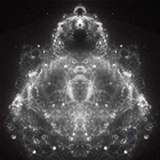
For a complete and detailed explanation, please select (click) the following link (picture on the right)
ADVANCED ENERGY HEALING SHEN KUNG SESSION FOR KUNDALINI SYNDROME
Accompanied by Integral Balance solutions to your health
Shen = Subtle Energy, Kung = Administration

One-on-One sessions in person or distant healing are both equally effective. Please reserve in advance to receive a Session Case Information PDF document via e-mail which will be used as the basis for the first session. The completed document is required with a picture. The session will be conducted via Skype or in-person if I am in your town.
Contact Email: Info@iChiKung.com
Book first session (1.5 hours):
|
$90 USD |
|
|
Cedit Card (PayPal) |
Book thereafter session (45 minutes):
|
$54 USD |
|
|
Cedit Card (PayPal) |
Refunds will not be available for registrants who choose not to complete the session.
R.S.V.P. Info@iChiKung.com to schedule session
Disclaimer: Please remember that One-on-One sessions in person or distant healing are not a substitute for professional care or psychiatric help if that is what is needed. Many physicians and psychologists recommend meditation in conjunction with standard therapies.
